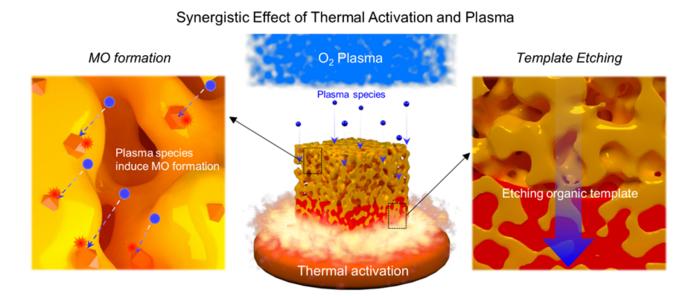Camrelizumab, Apatinib, Irinotecan: New Esophageal Cancer Therapy
In a groundbreaking advancement for esophageal cancer treatment, researchers have unveiled compelling evidence supporting the efficacy of camrelizumab combined with apatinib and irinotecan as a potent second-line therapy for advanced or metastatic esophageal squamous cell carcinoma (ESCC). This combination therapy emerges as a beacon of hope for patients who have exhausted first-line treatment options, promising […]


In a groundbreaking advancement for esophageal cancer treatment, researchers have unveiled compelling evidence supporting the efficacy of camrelizumab combined with apatinib and irinotecan as a potent second-line therapy for advanced or metastatic esophageal squamous cell carcinoma (ESCC). This combination therapy emerges as a beacon of hope for patients who have exhausted first-line treatment options, promising enhanced survival outcomes and manageable safety profiles. The study, recently published in BMC Cancer, showcases a meticulous clinical investigation coupled with innovative predictive modeling that may redefine therapeutic strategies in oncology.
Esophageal squamous cell carcinoma remains a formidable clinical challenge due to its aggressive nature and limited responsiveness to conventional therapies once the first line is exhausted. While camrelizumab—a PD-1 immune checkpoint inhibitor—paired with apatinib, a VEGFR2-targeted tyrosine kinase inhibitor, and chemotherapy has demonstrated promising results in frontline settings, its utility as a subsequent treatment had not been thoroughly characterized. This study bridges that knowledge gap by exploring the tripartite regimen with irinotecan serving as the chemotherapeutic agent post initial treatment failure.
The clinical trial assembled a cohort of 59 patients diagnosed with advanced or metastatic ESCC between January 2020 and March 2024. These individuals received the combination of camrelizumab with apatinib plus irinotecan following progression during prior therapies. The primary endpoint of this longitudinal study focused on progression-free survival (PFS), aiming to assess the time period during which patients survived without disease exacerbation. Secondary endpoints included overall survival (OS), objective response rate (ORR), disease control rate (DCR), and a comprehensive evaluation of treatment-related toxicity.
Remarkably, at the time of data analysis, 58 patients had concluded the study, predominantly due to disease progression or mortality, underscoring the aggressive course of ESCC. Despite this, the treatment regimen yielded an ORR of 37.7%, indicating that nearly four out of ten patients experienced measurable tumor shrinkage. Additionally, the DCR was elevated at 84.9%, reflecting stable disease or better in the vast majority of patients. These results mark a significant therapeutic advancement compared to historical controls within this heavily pretreated population.
Delving deeper, the median progression-free survival was documented at 6.3 months, with a 95% confidence interval ranging from 4.8 to 7.8 months. More impressively, median overall survival reached 16.7 months, indicating meaningful extension of life expectancy beyond conventional treatments. This survival benefit speaks to the potential synergy between camrelizumab’s immunomodulatory effects, apatinib’s anti-angiogenic mechanism, and irinotecan’s cytotoxicity, offering a multi-pronged attack against tumor progression.
Safety considerations remain paramount in oncology drug development. The study meticulously cataloged adverse events, revealing leukopenia as the most frequently encountered side effect, affecting over half of the patients. Fatigue, anemia, thrombocytopenia, neutropenia, and hypoalbuminemia were also notable but largely manageable. Importantly, most adverse events were limited to grades I and II, signifying mild to moderate severity, and only 20.3% of participants endured grade III-IV toxicities. This favorable safety profile supports the clinical feasibility of this combination approach in routine practice.
Beyond the clinical data, the study harnessed advanced radiomic analysis and clinical parameters to construct predictive models to forecast patient survival probabilities more accurately. Radiomics, an emergent field extracting quantitative features from medical imaging, enabled nuanced tumor characterization beyond conventional metrics. These models derived from multivariate Cox regression analyses demonstrated exceptional predictive performance, with an area under the receiver operating characteristic curve (AUC) of 0.979 for one-year overall survival prediction, indicating near-perfect discrimination.
This predictive capacity holds profound implications for personalized oncology, wherein treatment plans could be tailored based on early risk stratification, potentially optimizing resource allocation and improving patient counseling. The integration of radiomic biomarkers with clinical data illustrates a growing paradigm in precision medicine that transcends traditional histopathological evaluation.
The therapeutic landscape for esophageal squamous cell carcinoma has witnessed incremental progress, but outcomes remain suboptimal, particularly in the second-line setting and beyond. The ability of this combined regimen to extend survival with a tolerable side effect profile addresses a critical unmet medical need. Furthermore, the study highlights the importance of multidisciplinary approaches incorporating immunotherapy, targeted agents, and chemotherapy to exploit complementary mechanisms of action.
Immunotherapy’s introduction has revolutionized oncology, and camrelizumab exemplifies this era’s promise. By reinvigorating exhausted T cells through PD-1 blockade, camrelizumab empowers the immune system to mount an effective anti-tumor response. Apatinib further complements this by inhibiting angiogenesis, starving tumors of necessary vascular support, thereby potentially enhancing immune cell infiltration. Irinotecan, a topoisomerase inhibitor, confers direct cytotoxic effects, collectively orchestrating a multifaceted therapeutic assault.
Despite these encouraging findings, questions remain regarding optimal dosing schedules, long-term toxicity, resistance mechanisms, and the identification of biomarkers predictive of response or resistance. Ongoing research should focus on validating these results in larger, randomized controlled trials and exploring the interplay of tumor microenvironment factors influencing treatment efficacy.
The reported study reflects a pivotal step forward, demonstrating that a rationally designed combination regimen can yield meaningful clinical benefits in a disease historically resistant to salvage therapies. Its integration of sophisticated predictive modeling paves the way for a future where individualized therapy selection is guided by robust quantitative tools, thereby enhancing patient outcomes.
Clinicians treating ESCC patients should be cognizant of these developments, as the adoption of such combination regimens may redefine standard care paradigms in the near term. Moreover, leveraging imaging-derived data alongside clinical variables represents an innovative frontier in oncology research that warrants broader application across tumor types.
In conclusion, camrelizumab combined with apatinib plus irinotecan constitutes an efficacious and safe second-line treatment strategy for patients battling advanced or metastatic esophageal squamous cell carcinoma. The synergy between immunotherapy, targeted inhibition, and chemotherapy manifests in improved response rates and extended survival, affording patients a valuable therapeutic option. Coupled with advanced predictive tools, this approach exemplifies the potential of precision oncology to transform outcomes for some of the most challenging malignancies.
Subject of Research: Advanced or metastatic esophageal squamous cell carcinoma treatment using camrelizumab combined with apatinib plus irinotecan as a second-line therapy.
Article Title: Camrelizumab combined with apatinib plus irinotecan as a second-line treatment in advanced or metastatic esophageal squamous cell carcinoma patients.
Article References:
Wu, S., Luo, H., Chen, W. et al. Camrelizumab combined with apatinib plus irinotecan as a second-line treatment in advanced or metastatic esophageal squamous cell carcinoma patients. BMC Cancer 25, 845 (2025). https://doi.org/10.1186/s12885-025-14207-8
Image Credits: Scienmag.com
DOI: https://doi.org/10.1186/s12885-025-14207-8
Keywords: Camrelizumab, apatinib, irinotecan, esophageal squamous cell carcinoma, second-line treatment, immunotherapy, anti-angiogenic therapy, chemotherapy, radiomics, predictive modeling, progression-free survival, overall survival, adverse events, personalized oncology
Tags: advanced esophageal squamous cell carcinomaapatinib irinotecan combination treatmentcamrelizumab esophageal cancer therapycancer survival outcomeschemotherapy for metastatic cancerclinical trial results for ESCCinnovative cancer treatment strategiesPD-1 immune checkpoint inhibitorpredictive modeling in oncologysecond-line therapy for ESCCtreatment options for advanced cancerVEGFR2-targeted tyrosine kinase inhibitor
What's Your Reaction?

































